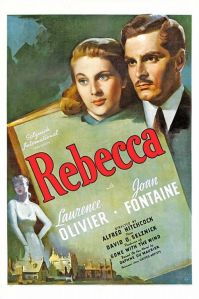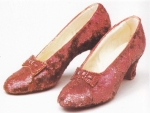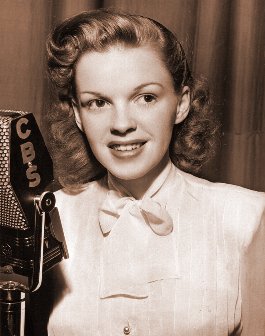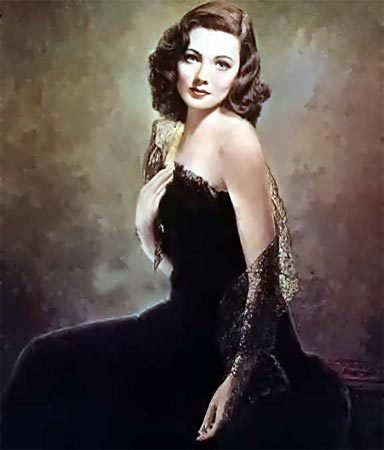As many people are well aware, for the past several months Juan and I have undertaken a semi-formal classic film education. That being the case, we watch, on average, a new film from the classical period just about every day. Sometimes we squeeze in two, and on weekends we’ve been known to watch as many as eight. We really aren’t going about it randomly either. We have at hand the 1001 Movies You Must See Before You Die, and Richard Maltby’s Hollywood Cinema, along with a growing collection of others. On my side, I must admit, most of them are (thus far) either about Judy Garland, or The Wizard of Oz, but what can you do? This leopard is far from changing his spots!
Thus far, we’ve canvassed from 1902’s Le Voyage Dans La Lune, to the present day, but we have stayed, at least recently, squarely in the 1930’s and 1940’s. A very good place to stay, if you ask me!
I was asked this morning, given that Juan and I have now, easily, watched at least a few hundred of the best films to ever come out of Hollywood, what I would recommend as films not to be missed. So, I created a list. It’s biased, and my personal recommendations are, of course, coloured by my own taste and particularities. (Read that as Judy Garland is present a lot, but I actually tried to reign her in, honestly I did.) I’m also entirely aware of the fact that there are, what would seem to be, horrible omissions here. But, to place the list in context, I was asked what films I would recommend as a starting point for anyone who’s never watched that much of Classic Hollywood, and this list was the result. I am not an expert, far from it. For that you’d have to go to my friend Sean. I know it, I acknowledge it, I admit it; my film knowledge is far inferior to many others. Live with it; I do.
All that being said, here are the films that have really stuck out to me for one reason or another.
Obviously, The Wizard of Oz, (1939) is at the top of the list, but I assume any person vaguely familiar with Western culture, and breathing, will have seen the film. That being said, if you haven’t seen it since you were a child (for whatever horrible reason) pop it in to your DVD player (or YouTube or BitTorrent, or whatever) and give it another view. I love it as much today as when I was five. Honestly, maybe more, and I still find myself watching it at least once a month, if not more. Then again, working on replicating the ruby slippers provides an excellent excuse!
Beyond “Oz,” my recommendations, in no particularly order, are:
Laura (1944) It’s one of the (very) few “film noir” that I’ve honestly enjoyed. The murder of a beautiful woman who seems to enchant all those around her. Gene Tierney is fantastic, and having a queer eye when watching the film reveals more than the surface seems to suppose.
Gone With the Wind (1939) Anyone who hasn’t seen it, honestly, is crazy. Yes, it is long, but it is beautiful, and gripping, and utterly fantastic. The book (equally long, at 1,036 pages) is superb.
Casablanca (1942) Humphrey Bogart and Ingrid Bergman in a story of true love and sacrifice, set against World War II. “Here’s looking at you kid!”
Roman Holiday (1953). The first American screen appearance of Audrey Hepburn, and one for which she won the Academy Award for Best Actress. Besides, who can resist the story of a princess who just wants to be a regular young lady?
Citizen Kane (1942) Said by many to be the best film ever made. For its technical achievements, and use of innovative storytelling techniques, along with the use of a non-linear narrative, with multiple, unreliable, narrators, along with taking on in topic one of the most powerful men in America, Newspaper magnate William Randolph Hearst, it’s worth your time to discover what all the fuss is about. It’s a wonder it even survives today, given all the pressure at the time to have the negative destroyed!
Now, Voyager (1942) Bette Davis as Charlotte Vale, evolves from a repressed spinster, who shrinks under the care of her dictatorial mother, to a strong, independent woman, not unlike Davis herself. Featuring Davis at her most iconic, it is a film not to be missed.
It Happened One Night (1934) With Clark Gable and Claudette Colbert, this story of a spoiled socialite who runs away to get out from under her father’s thumb only to fall in love with a roguish reporter is THE romantic comedy. Every subsequent “boy meets girl” story begs, borrows, or steals from this one.
 Rebecca (1940) Produced by David O Selznick, the man behind “Gone With the Wind,” at the same time as the colossus, it tells the dark story of a young woman (Joan Fontaine) who marries the ideal husband (Sir Laurence Olivier) only to find herself in the constant shadow of his dead wife, Rebecca.
Rebecca (1940) Produced by David O Selznick, the man behind “Gone With the Wind,” at the same time as the colossus, it tells the dark story of a young woman (Joan Fontaine) who marries the ideal husband (Sir Laurence Olivier) only to find herself in the constant shadow of his dead wife, Rebecca.
Rope (1948) Hitchcock’s tale of two young gay men who, plan and execute, the perfect crime. Throwing a huge dinner party, while the body lays in the centre of the room. Shot in lavish Technicolor, and featuring James Stewart, the film is a technical triumph, appearing to be shot with a minimum of cuts, giving one a lavish sense of space, in lush colours, at odds with the context of the film.
Mildred Pierce (1945) Joan Crawford as a strong-willed entrepreneur determined to realise the American dream for herself, and her daughter, at any cost.
Sunset Boulevard (1950) A washed out movie actress (Gloria Swanson) attempts to grasp at a young film writer who accidentally ends up entrapped in her web, in a futile attempt to reclaim her former glory, with tragic consequences.
I Could Go On Singing (Also known as The Lonely Stage in the UK) (1963) Judy Garland’s final film, in which she plays a singer/actress, not unlike herself, Jenny Bowman, who comes to England in search of the family she left so many years before. Garland helped co-star Dirk Bogarde write several scenes in the film, giving, perhaps a glimpse, of how she truly felt about her life, and her legend.
Psycho (1960) Three words, Bloody shower scene, or, “rheent, rheent, rheent”
A Star is Born (1954) Judy Garland and James Mason star as the fading elder leading man helping the young actress achieve stardom as his own life becomes dark indeed. While this film is beautiful (despite the fact that Jack Warner hacked it to pieces after it’s completion, complaining it was “too long”), it is, I find, difficult to watch, yet worth it all the same.
 For those particularly interested in Classic Hollywood, I recommend Juan’s blog, Amateur Film Studies, along with The Golden Age of Hollywood website and forum. If you have any interest in Hollywood costuming, you may also enjoy my other blog, The Ruby Slippers Project, in which I chronicle my efforts at recreating Judy Garland’s ruby slippers from The Wizard of Oz
For those particularly interested in Classic Hollywood, I recommend Juan’s blog, Amateur Film Studies, along with The Golden Age of Hollywood website and forum. If you have any interest in Hollywood costuming, you may also enjoy my other blog, The Ruby Slippers Project, in which I chronicle my efforts at recreating Judy Garland’s ruby slippers from The Wizard of Oz

